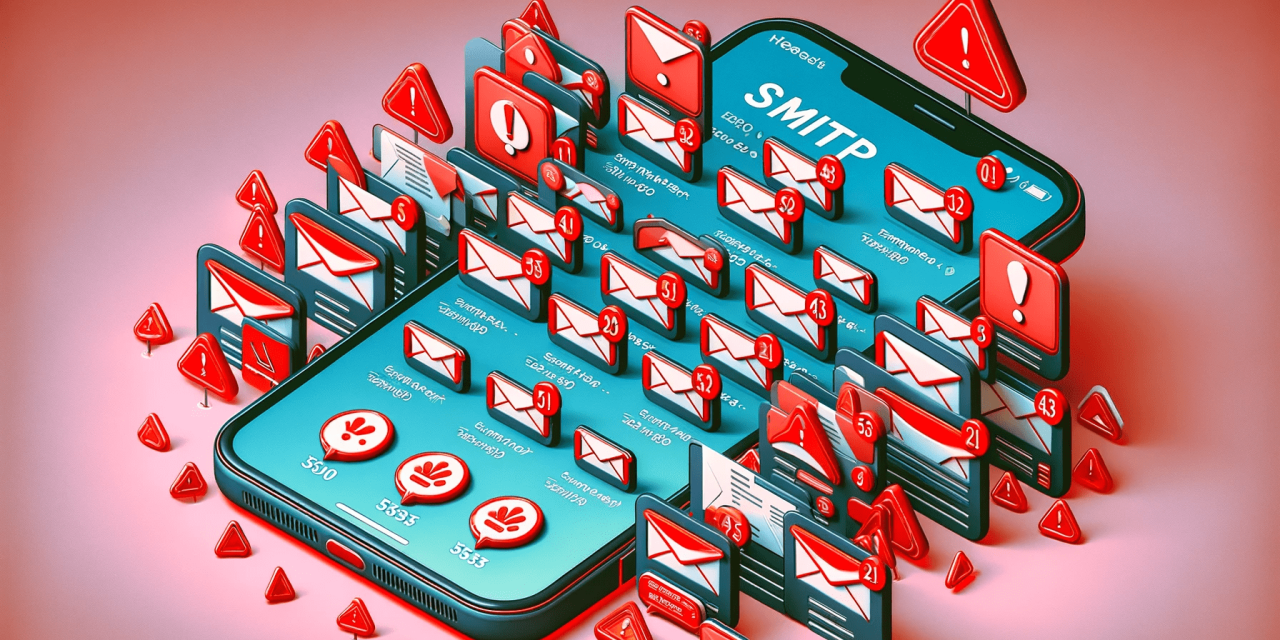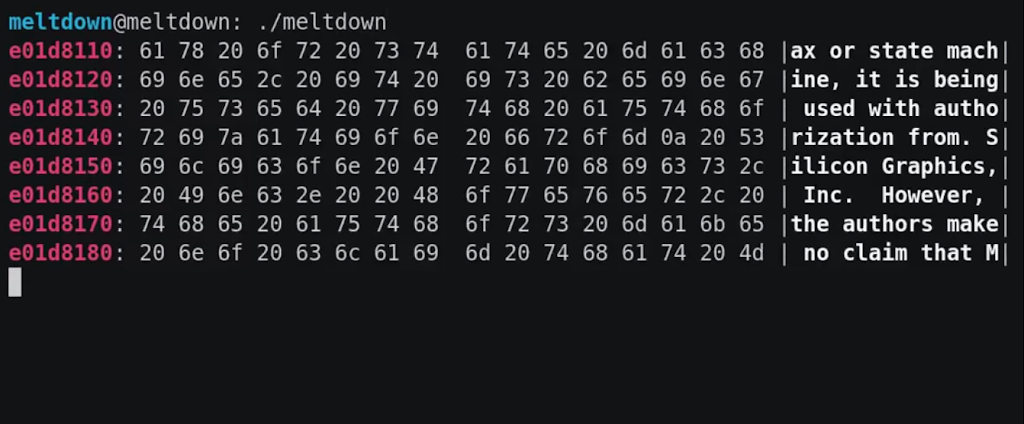The introduction of new sender guidelines by Google and Yahoo marks a significant shift in email communications, underscoring the importance of compliance for uninterrupted email delivery. These internet behemoths have begun issuing temporary warnings to senders not adhering to their standards, with plans to start declining a portion of emails from non-compliant senders in February 2024. Understanding the specific error codes and messages associated with these rejections is crucial for addressing and resolving compliance issues.
Insight into Gmail Error Codes
Google is renowned for its commitment to enhancing user experience, including providing detailed explanations for email delivery failures.
Common Gmail Error Codes Include:
- 550, “5.7.26”: Indicates emails from unauthenticated domains are blocked due to DMARC policy violations. It suggests contacting the domain’s administrator or consulting Google’s DMARC guide for legitimate emails.
- 550, “5.7.26”: Signals a failure in SPF checks against a domain’s strict SPF policy, resulting in email rejection to protect against spam and phishing.
- 550, “5.7.1”: Points to unauthorized IP addresses attempting to send emails, often due to blacklisting.
- 421, “4.7.0”: Temporary system problem, try again later. This error indicates a transient issue with Gmail’s servers, suggesting that the sender should retry sending the email after some time.
- 450, “4.2.1”: The user you are trying to contact is receiving mail at a rate that prevents additional messages from being delivered. This is a rate-limiting response from Gmail, indicating the recipient’s inbox is currently too full or receiving too many emails in a short period.
- 550, “5.1.1”: The email account that you tried to reach does not exist. This indicates that the recipient’s email address is incorrect or has been deleted.
- 550, “5.2.1”: The user you are trying to contact is over their quota. This error means the recipient’s inbox is full, and they need to free up space before they can receive new emails.
- 550, “5.4.5”: Daily sending quota exceeded. This message is sent when a sender has exceeded the number of emails they are allowed to send in a day through Gmail’s servers.
- 550, “5.7.0”: Mail relay denied. This error occurs when sending attempts to violate Gmail’s policies on mail relay and could be triggered by suspicious activity or non-compliance with Gmail’s security standards.
- 550, “5.7.28”: Unauthenticated email from the domain name is not accepted due to the domain’s DMARC policy. Similar to “550, 5.7.26”, but specifically points to issues with DMARC alignment and authentication that prevent delivery.
Yahoo Error Code Insights
Yahoo’s error codes, primarily within the 5xx range (553 and 554), highlight authentication issues.
Key Points for Yahoo Error Codes:
- Emails failing DKIM authentication under specific conditions, prompting a review of the DKIM signature and domain policies.
- Recommendations for mailing lists to adjust sending behaviors for better compliance.
- 553 5.7.1 [BL21] and 553 5.7.1 [BL23]: Indicate IP blacklisting by Spamhaus, prohibiting email delivery.
- 421 4.7.0 [TS01]: Temporarily deferred due to user complaints or suspicious activity. This error indicates that Yahoo’s filters have detected unusual traffic from your IP, which could be due to a sudden spike in email volume or reports of spam.
- 421 4.7.1 [TS03]: The sending IP is temporarily blocked by Yahoo’s anti-spam measures. Senders might see this code if their IP has been involved in sending spam or violating Yahoo’s sending limits.
- 554 5.7.9: Message not accepted for policy reasons. This error suggests that the content of the email or the sending practices have triggered Yahoo’s spam filters, possibly due to the presence of malicious links, spam-like characteristics, or violation of Yahoo’s content policies.
- 554 5.7.5: SMTP protocol violation, see RFC 2821. This technical error indicates a failure to adhere to SMTP protocol standards, which could involve issues with the email’s structure, headers, or transmission method.
- 475 4.7.0: Authentication required. Yahoo has detected an attempt to send email without proper authentication, necessitating the use of authenticated SMTP (Simple Mail Transfer Protocol) settings.
The Importance of SMTP Error Codes
When an email fails to reach its intended recipient, the recipient’s mail server communicates with the sender’s server by issuing an SMTP (Simple Mail Transfer Protocol) error code. This code serves as a diagnostic tool, detailing the specific reason for the delivery failure. Accompanied by a descriptive message, the error code translates complex server language into understandable terms, shedding light on what went wrong.
SMTP error codes are indispensable for maintaining the integrity and efficiency of email communication. They offer immediate feedback on the fate of sent emails, equipping senders with the knowledge needed to troubleshoot delivery obstacles.
Error codes fall into two primary categories, signaling either temporary or permanent issues:
- 4xx Series (Temporary Failure): These codes suggest a transient problem, advising senders to retry their submission later. Such errors indicate that, although the server is temporarily unable to fulfill the request, the condition may soon change. A typical example, “421 Server busy, try again later,” points to short-term server unavailability.
- 5xx Series (Permanent Failure): In contrast, these codes denote an irreversible delivery failure, advising against repeated sending attempts. This category signifies that the email has been definitively rejected due to a lasting issue on the recipient’s end, such as “550 User not found,” which means the intended email address is invalid or no longer in use.
Navigating Google and Yahoo’s New Sender Requirements
Adherence to the new sender requirements involves setting up SPF, DKIM, and DMARC protocols. Common pitfalls include incorrect DMARC record placement, duplicate records, and premature policy enforcement. Gradual DMARC enforcement, coupled with SPF and DKIM alignment, is essential for effective email authentication.
Solutions for Compliance Challenges
Upon receiving error codes from Google and Yahoo that point to delivery failures, you may wonder about the best course of action. The initial step is to align with the latest Email Authentication Requirements set by Google and Yahoo, which mandate the setup of SPF, DKIM, and DMARC protocols for anyone sending bulk emails.
Successfully implementing DMARC involves navigating common pitfalls. Here’s how to address typical challenges administrators face:
- Position Your DMARC Record Correctly: It’s essential to place your DMARC record at _dmarc.yourdomain.com, not directly under yourdomain.com. DMARC is designed to operate at a subdomain level to ensure accurate functioning. Utilizing tools designed to help create DMARC records can steer you through the setup accurately.
- Maintain a Singular DMARC Record: Only one DMARC record should exist per domain or subdomain. Having multiple records can cause conflicts and disrupt your email delivery. Employ a DMARC Lookup tool to confirm the presence of a single record, eliminating potential interference.
- Incorporate RUA and/or RUF Tags: Setting up a DMARC record without specifying RUA (Reporting URI of Aggregate reports) and/or RUF (Reporting URI of Forensic reports) addresses can hamper your ability to monitor and troubleshoot email issues. Many email service providers suggest initiating a policy of “v=DMARC1; p=none” only, including these tags is vital for a comprehensive overview of your email environment.
- Adopt a Phased Approach to Policy Enforcement: Jumping directly to a ‘reject’ policy (p=reject) is not advisable. Start with a ‘none’ policy and include an RUA address for receiving reports. This strategy lets you gradually understand your email-sending practices, pinpoint and rectify authentication problems, and methodically move to stricter enforcement.
- Ensure SPF and DKIM are Properly Aligned: DMARC acts as an additional layer of verification atop SPF and DKIM, enhancing email security. Implementing DMARC with an RUA tag instructs email providers to send you detailed reports on the authentication and alignment of your SPF and DKIM records. Regular analysis of these reports is crucial for identifying and correcting any misalignments.
By adhering to these guidelines, you can enhance your compliance with Google and Yahoo’s authentication standards, mitigating the risk of email rejection and improving the overall deliverability and security of your email communications.







